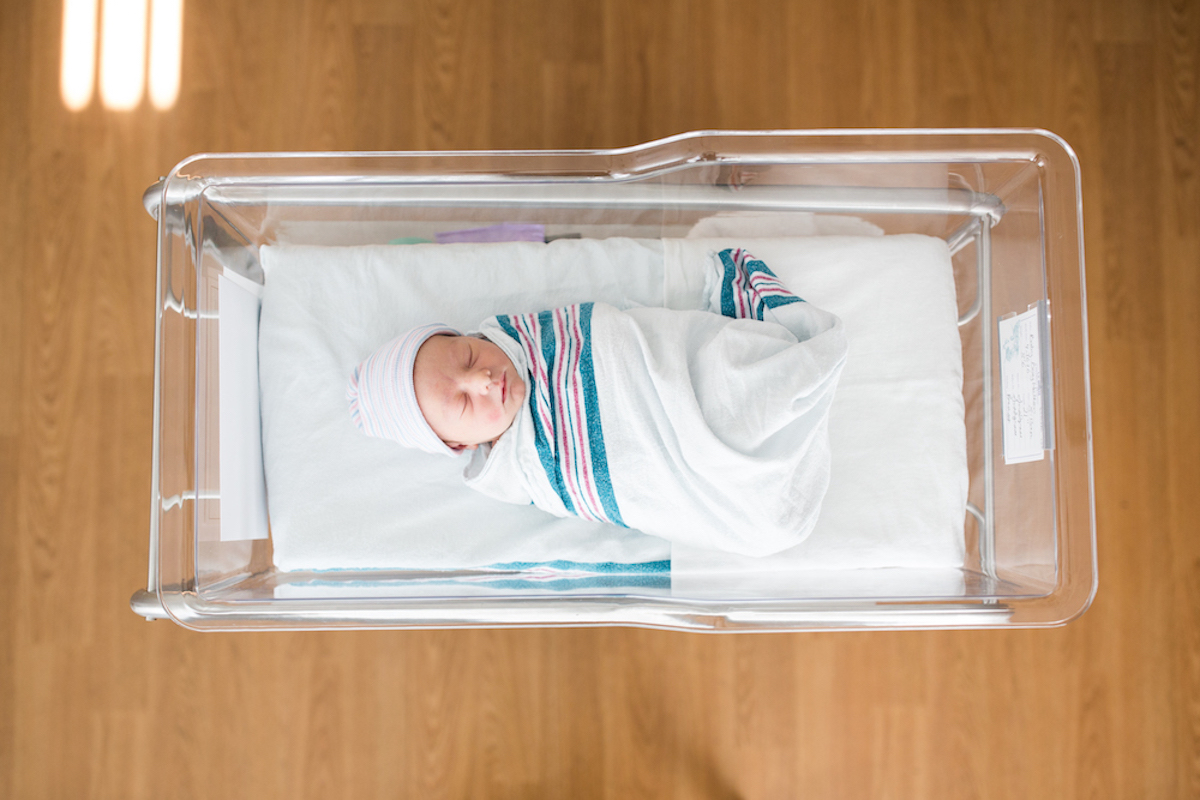This perhaps over-shares my work process, but I have a system which filters emails that come through this channel into a folder so I can look at them all together and get a sense of what people are thinking.
This folder blew up on Friday. “Toxic Metals In Baby Food?” “Help! Baby food thing?” “Baby Food Scare”?” These emails were panicked. It was good you all wrote, too, since I had missed the many scary click-bait articles.
(In fact, the emails were so panicked, this is coming out early rather than waiting until Monday).
In case you, too, missed it: here is what is going on. Congress convened a subcommittee in November to investigate claims of high levels of heavy metals — arsenic, lead, cadmium and mercury — in baby foods. They issued a report on their findings last week, which argued there are high levels of these metals in many baby foods. Most notable are rice-containing foods like puffs. This follows reporting by Healthy Baby Food, which has a similar message and is part of what prompted the investigation. They issued a report, and also posted some data, which you can see here.
The congressional report, the Healthy Baby Study, the data, the reporting….they are all extremely scary. Apple and Broccoli puffs have 180 ppb inorganic arsenic! Earths Best Organic had a secret meeting with the Trump administration about heavy metals! The narrative in many of the emails I got seemed to be something like this:
OMG I have been poisoning my kid. I’m a terrible parent. Breathe, breathe. It’s okay. I’ll just get the organic stuff from now on. AH! Earth’s Best is on the list. Okay, okay, it’s cool. I’ll make my own stuff. Wait a minute. Regular adult rice also had a lot of arsenic. Breathe, breathe. Let’s move to a farm in Maine. We will grow our own food and drink well water and live off the land. AH! Well water in Maine has high levels of arsenic!
F**k it. I’m switching to a kid diet of Cheetos.
I get this! But before you stock up on chips (which probably also have arsenic) let’s review the data.
First thing to say: no matter what you do, you are exposed to these heavy metals through various sources. There is inorganic arsenic in food and water, largely due to presence in the soil. Lead is also in your water or at least might be, depending on the age of your pipes. So while it might be an “ideal”, you really cannot avoid some exposure to these substances, either for you or your children. I mention this because I think some of these headlines suggest baby food is somehow unique.
Second: metal like this build up over time, and it’s the concentrations as they build up that cause us to worry. Yes, you can be poisoned by a single dose of arsenic, but this would be an orders of magnitude different amount than we see in any food products. The worry is that small amounts over time build up and might cause problems, largely neurological (lower IQ, more behavior problems) in kids.
Third: if you look carefully at the test results they produced here, far and away the big concern is arsenic in things like puffs and rice cakes. (Look to the second tab of the spreadsheet linked above — where they have the “above goal” results). They cite evidence of high rates of other metals in ingredients which go into baby foods, but as these are diluted in final products, it’s not clear how this translates. In their final product testing, the rice stands out.
There are a couple of items with higher lead concentrations, but the fact is that lead in water is a much bigger concern. We screen kids for lead frequently, and engage in mitigation if we see higher than expected levels.
Really, I think we can dial the question here down to: Should I panic about arsenic in rice cereal/puffs/rice cakes/etc. To figure out whether this is a level-10-freak-out-move-to-low-arsenic-farm situation, we need to answer two things. How significant are the links between arsenic and bad outcomes and how much does baby food matter for these impacts?
So let’s go.
Heavy metals and neurodevelopment
Arsenic, in high doses at least, is associated with lower intellectual functioning. For example: data from Bangladesh, where much of the drinking water is very high in arsenic, shows that children who have higher urinary arsenic concentrations have lower IQ scores. Similar data directly links arsenic in water with various cognitive measures, although this link is weaker.
The concentrations of arsenic in water in Bangladesh are high. In that second study, the average well water concentration was 120 micrograms per liter. This means that if a child had 1 liter of drinking water per day a typical daily exposure would be 120 micrograms. The maximum levels in these studies are in the range of 800 micrograms per liter.
At lower levels there are suggestions of a link between arsenic concentrations and IQ but the data are less clear. The congressional report cites one study about well water in Maine (see it here) which suggests children who got their water from wells with high arsenic levels had lower IQ scores. The levels here are much lower than Bangladesh — their higher groups are only at 20 micrograms per liter — and although the effects are large, they aren’t as statistically compelling. Children exposed to between 5 and 10 micrograms per liter do worse than either the lower or higher groups. It’s not clear why this would be, and it may suggest some bias in the results, perhaps a result of the strong correlation between socioeconomic status and arsenic exposure.
Having said this: the evidence from Bangladesh, and just basic principles, make it clear that inorganic arsenic can be damaging. The same is true for these other metals — lead, cadmium, mercury. Cadmium is also common in Bangladesh and we also see IQ effects there.
In principle, there is good reason for concern. But I want to talk about amounts.
Let’s do the numbers on heavy metal exposure
Based on the Bangladesh data, children there who were (say) tested at the age of 7 would have been exposed to high arsenic for basically their entire childhood. If they had a liter of water a day (perhaps an underestimate) for six years, that’s 262,800 micrograms of arsenic exposure. This is on top of the exposure they have to food grown in high arsenic soil and other sources.
Even for a child drinking well water in Maine at 10 micrograms per liter, a liter a day would translate to 21,900 micrograms over that period.
All of the highest arsenic foods in the congressional data are rice-based, since rice itself often has high inorganic arsenic. The worst performing foods were a type of puff, which in one case had concentrations of 180 ppb (which is a microgram per liter equivalent). A serving size of this time (Happy Baby Apple and Broccoli Puffs) is 7 grams (about a half a cup). Doing the conversion, this converts to an expected exposure of 1.2 micrograms per serving of inorganic arsenic (7 grams = 0.007 kg; ppb is microgram per kg, 180*0.007 = 1.26. Tada! That took me 20 minutes).
Kids do not eat puffs forever. Let’s imagine your child has two servings of puffs a day for two years. That’s 1752 micrograms of arsenic, an order of magnitude less than the people in the study of well water in Maine and two orders of magnitude less than Bangladesh. And this is a lot of puffs, probably for longer than people usually feed them, and it’s the worst performing food they tested.
Ultimately, the numbers here suggest that the exposure a child has through these foods is unlikely to be very large relative to the exposures which have been demonstrated to have effects. The people who emailed to ask me if they had poisoned their child — or sent me the post on Medium with the title “I poisoned my child” — please stop beating yourself up. You didn’t.
This is really my main point here. Yes, there is some evidence that children who drink water with extremely high arsenic levels for their whole childhood have cognitive impacts. And, yes, puffs seem to have some arsenic in them, likely due to the arsenic in rice. But the scale of the exposure is totally different.
What to do about heavy metals in baby foods
The point of the congressional report seemed to be that all baby foods are basically just a jar of toxic metals with a small amount of carrots. I think a more accurate read would be that there are some brands of rice-based puffs and cakes which are a cause for some (mild) concern. The report maligns some manufacturers which did not participate, saying that perhaps they did so because they would perform worse. But there are other reasons they might not want to engage.
The policy suggestion is that the FDA be more rigorous with their standards and require better reporting. This seems reasonable to me, certainly the second piece of this. And secret meetings with the White House seem like a mistake, as is giving in to some kind of baby food lobby, as they claim has happened.
But from an individual parent standpoint: should you change what you do? From where I sit I would say at most — at absolute most and I want to be clear I don’t see a lot of reason to do this — I might cut down on rice-based puffs and cakes. Maybe skip rice cereal? All the people who wrote to ask if they have to make their own baby food — no. And it’s not clear this would help! The problem is largely with ingredients, not processing.
You could start with oatmeal, rather than rice. Maybe replace the puffs with Cheerios. Or pieces of cheese? Or tofu! My kids liked that in little chunks. Or don’t. It’s fine also if you do not. Honestly, please do not think about this too much.
Community Guidelines

















